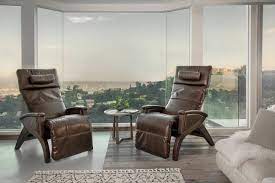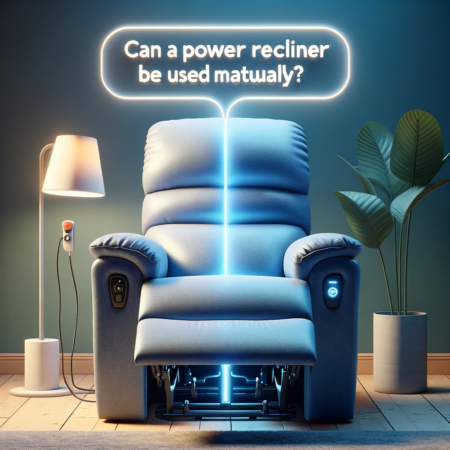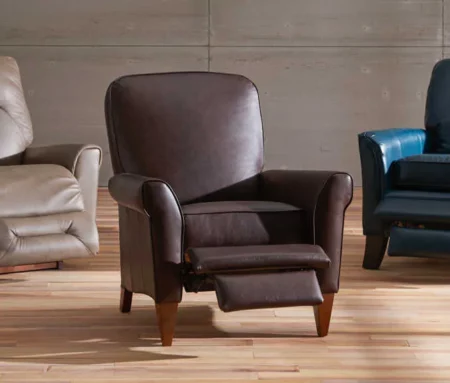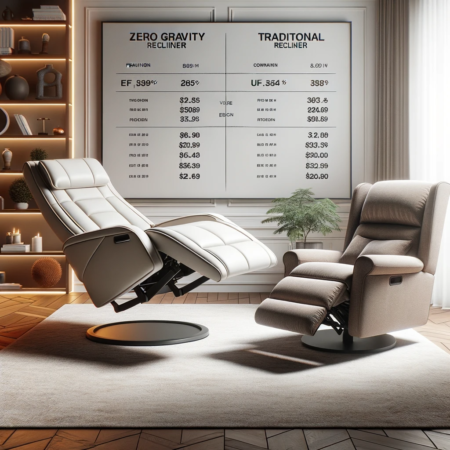A squeaky rocker recliner can be annoying and embarrassing.
The most common causes of squeaking are loose nuts and bolts, worn or damaged components, poor lubrication, foreign objects, and improper use.
To fix a squeaky rocker recliner, identify the source of the squeak and take steps to address it.
If loose nuts and bolts cause the squeak, tighten them with a wrench. If the squeak is caused by worn or damaged components, replace them.
If the squeak is caused by friction, lubricate the moving parts with a lubricant, such as WD-40.
Why Does My Rocker Recliner Squeak?
There are several possible reasons behind this common issue. Let’s delve into each one to understand the root causes of a squeaky rocker recliner.
1. Loose Nuts and Bolts
One of the primary culprits behind a squeaking recliner is loose nuts and bolts.
Over time, with regular use, these fasteners can become loose due to the constant rocking motion.
When the nuts and bolts are not tightly secured, the components of the recliner may rub against each other, resulting in an irritating squeak.
2. Worn or Damaged Components
Rocker recliners consist of various moving parts, such as springs, joints, and hinges.
These components can wear out or become damaged over time, leading to squeaking noises.
For example, the springs may lose their elasticity or the joints may become misaligned. Such issues create friction and produce squeaks when the recliner is in motion.
3. Poor Lubrication
Lack of proper lubrication can contribute to squeaking noises in a rocker recliner.
The moving parts of the recliner, such as the swivel mechanism or the reclining mechanism, require regular lubrication to ensure smooth operation.
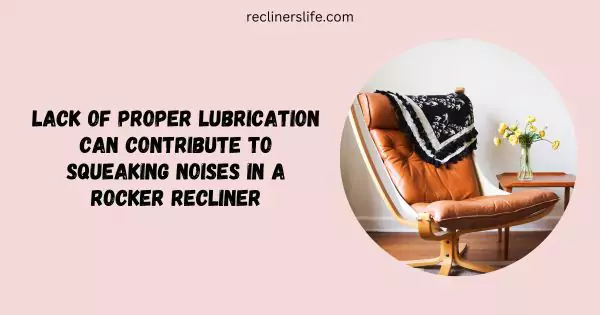
When the lubrication dries up or becomes insufficient, the friction between the components increases, resulting in squeaks.
4. Foreign Objects
Sometimes, foreign objects can find their way into the recliner, causing squeaks.
It could be anything from a small toy or a loose screw that has fallen into the mechanism.
These foreign objects can interfere with the proper functioning of the recliner, leading to squeaking sounds.
5. Improper Use
Improper use of a rocker recliner can also contribute to squeaking.
For instance, if you apply excessive force or rock the recliner too vigorously, it can put unnecessary strain on the moving parts.
Over time, this can lead to wear and tear, resulting in squeaks.
How To Identify The Source Of The Squeak?
Identifying the source of the squeak in your rocker recliner is crucial for effective troubleshooting. Here are some steps you can take to pinpoint the exact location of the noise:
- Sit in the recliner and slowly rock back and forth. Pay close attention to the areas where the sound seems to be coming from.
- Use your hand to press different parts of the recliner, applying gentle pressure as you rock. This can help you identify if any particular area or component is responsible for the squeak.
- Try rocking the recliner in different positions, such as fully reclined or partially reclined, to see if the squeaking changes or intensifies. This can provide additional clues about the source of the noise.
- If possible, remove any cushions or upholstery covering the recliner’s frame. Sometimes, the squeak may be muffled by the upholstery, making it difficult to locate the exact source.
How To Fix A Squeaky Rocker Recliner
1. Tightening Loose Nuts and Bolts
To fix a squeaky rocker recliner caused by loose nuts and bolts, you’ll need a wrench or a socket set.
Carefully examine the recliner and locate any loose fasteners.
Use the appropriate tool to tighten them, ensuring they are snug but not overly tightened.
2. Replacing Worn or Damaged Components
If worn or damaged components are the source of the squeak, you may need to replace them.
This could include springs, joints, or hinges that have deteriorated over time.
Consult the manufacturer’s instructions or seek professional assistance to identify the exact parts that need replacement.
Once you have the necessary components, follow the provided guidelines to install them correctly.
3. Lubricating the Recliner
Proper lubrication is essential for a smooth and silent rocking motion.
Identify the moving parts of the recliner that require lubrication, such as the swivel mechanism or the reclining mechanism.
Use a lubricant specifically designed for furniture, such as a silicone-based or Teflon-based spray.
Apply the lubricant to the relevant areas as per the manufacturer’s instructions. Make sure to wipe off any excess lubricant to avoid staining or attracting dust.
4. Fix Foreign Objects
If a foreign object is causing the squeak, you’ll need to locate and remove it. Carefully inspect the recliner, paying close attention to the areas where the noise is coming from.

If you find any foreign objects lodged within the mechanism, use appropriate tools, such as tweezers or pliers, to remove them.
Be gentle to avoid causing any damage to the recliner.
5. Use Properly
To prevent future squeaking, it’s crucial to use the rocker recliner properly.
Avoid applying excessive force or rocking too vigorously, as this can strain the components and lead to squeaks.
Follow the manufacturer’s guidelines on weight limits and usage recommendations.
By using the recliner as intended, you can minimize the risk of squeaking and prolong its lifespan.
Preventing Squeaking Recliners
1. Regular Maintenance
Performing regular maintenance on your rocker recliner can help prevent squeaking issues. Here are some maintenance tips to follow:
- Clean the recliner regularly, removing any dust, debris, or spilled liquids. Use a soft cloth or vacuum cleaner to clean the upholstery and crevices of the recliner.
- Inspect the recliner periodically for any signs of wear or damage. Address any issues promptly to prevent them from worsening and causing squeaks.
- Lubricate the moving parts of the recliner according to the manufacturer’s recommendations. Regular lubrication ensures smooth operation and minimizes friction.
2. Proper Use
Using the recliner correctly is crucial for preventing squeaking. Here are some guidelines to follow:
- Avoid rocking the recliner with excessive force. Use gentle, controlled movements to prevent unnecessary strain on the components.
- Do not exceed the weight limit specified by the manufacturer. Overloading the recliner can lead to accelerated wear and tear, resulting in squeaks.
- Educate family members or guests on the proper use of the recliner. Encourage them to follow the usage guidelines to maintain their optimal performance.
Conclusion
A squeaky rocker recliner can be a frustrating problem, but understanding its causes and knowing how to fix and prevent it can bring back the comfort and tranquility you seek.
Remember to perform regular maintenance and follow proper usage guidelines to prevent future squeaks.
With these steps, you’ll be able to silence the squeaks and enjoy the soothing relaxation your rocker recliner was designed to provide.
Frequently Asked Questions
Why Does My Rocker Recliner Squeak?
A rocker recliner may squeak due to loose nuts and bolts, worn or damaged components, poor lubrication, foreign objects, or improper use.
Why Does My Lazy Boy Recliner Make Noise When Rocking?
A Lazy Boy recliner may make noise when rocking due to loose fasteners, worn-out or damaged components, insufficient lubrication, the presence of foreign objects, or improper usage.
